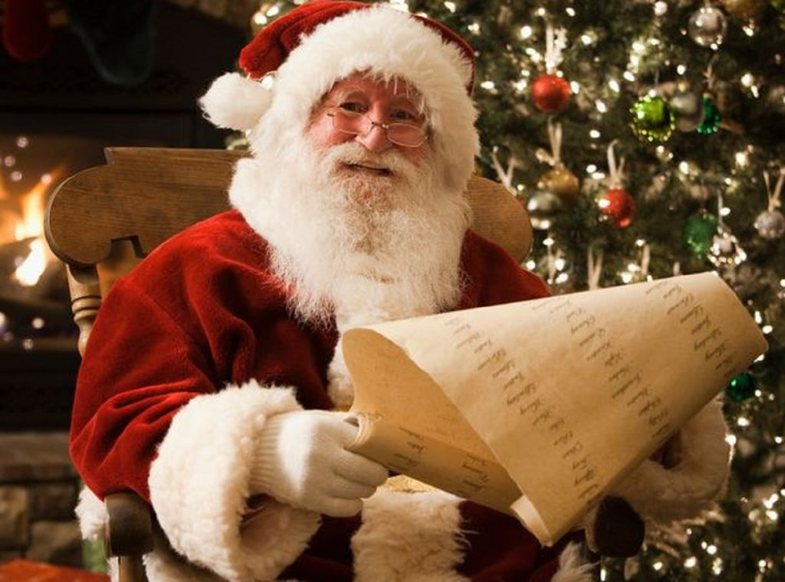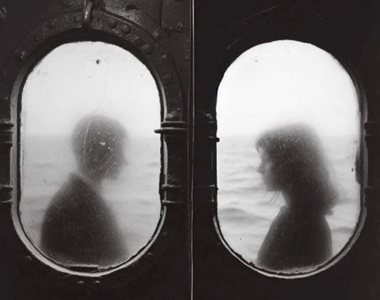
The Danes say Santa originated in Greenland. Sweden suggests that Mora is Santa's home country and built the Santaworld park.
But where does Santa originate?
Sending a letter to Santa can be difficult since no one agrees on exactly where he lives. Several countries are racing to claim him as one of their citizens.
Finland's tourism industry suggests that Korvatunturi in Lapland is where Santa has his workshop, and the connection between him and Lapland brings in hundreds of millions of dollars in tourism.
The Danes say Santa is in Greenland. Sweden suggests that Mora is Santa's country.
These places sure look like the right place with white snow in winter and deer. They are also close to the North Pole.
Not so hilarious traditions
They also have old and often quite disturbing folklore about Santa.
Pagan Finns celebrated St. Knut's Day in cold January by allowing various men to go from house to house with a bag of gifts. The exception was that the "nuuttipukki", (negative character), did not give gifts and probably made children cry. Men knocked from door to door, asking for gifts and cursing bad luck for any house that didn't give a gift.
Eventually, the gift-taking nuuttipukki became the gift-giving Joulupukki. Like other northern traditions such as Iceland's Christmas Boys, this visitor only gave presents to well-behaved children.
In the 19th century, Santa Claus settled into the popular consciousness more or less as we think of him now: a jolly old man with a beard, red, reindeer and presents, who lives somewhere in the north and in a cold climate. This image was constructed and, nevertheless, purged of Europe's most grotesque folklore of elves, gnomes, and other supernatural creatures who either bring or demand gifts.
But the standardization of Santa's appearance did not resolve where he really lived and worked.
In the mid-19th century, illustrator Thomas Nast featured him as a jolly old man in Harper's Weekly, and the illustration and image gained popularity. But Nast simply showed Santa in a winter landscape.
Santa and territorial disputes
Medieval and pagan mythologies in Finland and Scandinavia give some account of these countries' efforts to claim Santa as their own. Although all these are old legends, but they translate into tourism.
Other countries use a more modern approach. The Canadian government makes sure Christmas happens every year by allowing Santa to pass through Canadian airspace. Taking this a step further, in 2013, Stephen Harper's Conservative government granted Canadian passports to Santa's wife.
This action may seem like a funny gesture, or just a fun for children at Christmas, but it may also have shown that some governments want to ask for much more than Santa Claus.
Harper's gestures came at a time of international political dispute over ownership of the North Pole and specifically Canadian claims to Arctic territories.
Somewhere warmer than Poles
But are all these countries wrong, or are they trying to take advantage of the opportunity?
Regardless of what we think, where Santa really comes from is much warmer and much further east – and those red clothes would be incredible to wear.
Santa Claus is a name derived from Sinterklaas or Saint Nicholas. Along with pagan elves and gnomes, another element in Santa's long and very complex history is the Christian bishop Saint Nicholas of Smyrna. Or is Myra's Nicholas? Smyrna, now known as Izmir in Turkey, and Myra, now Demre in Turkey, are related to Nicholas. As in northern Europe, different countries in Anatolia compete to be associated with Santa.
Nicholas is the patron saint of everything, including archers and drinkers, but also children and sailors. The connection with children explains the later connection as Santa, especially since St. Nicholas gave gifts to children. The connection with sailors is the reason why his legend is known all over the world.
An archaeological dig in 2017 under the Church of Saint Nicholas in Turkey was believed to have discovered the site of the tomb and, therefore, the body of Saint Nicholas.
A grave full of old bones isn't very in keeping with the Christmas spirit, but it can be an authentic connection between a place and a person that no amount of snow or deer in northern Europe can match.





